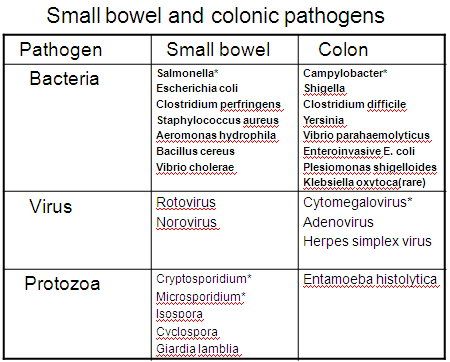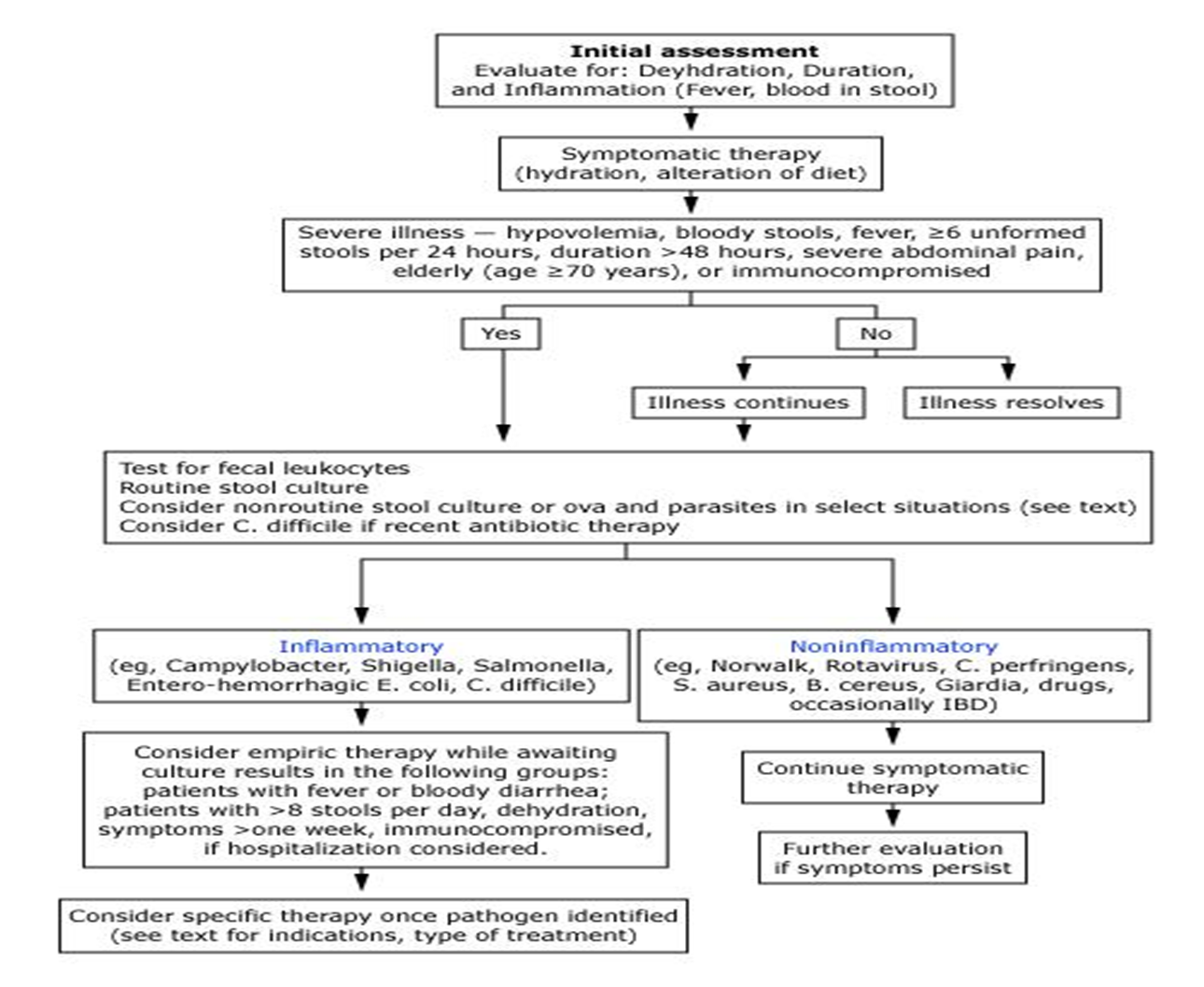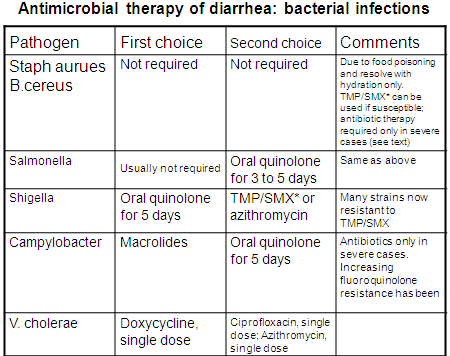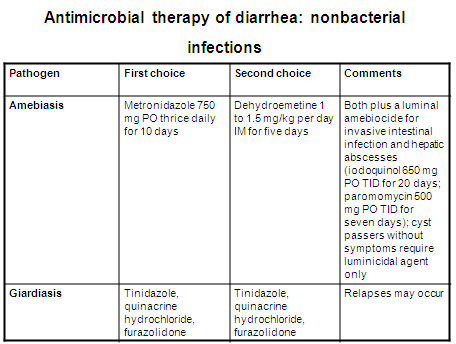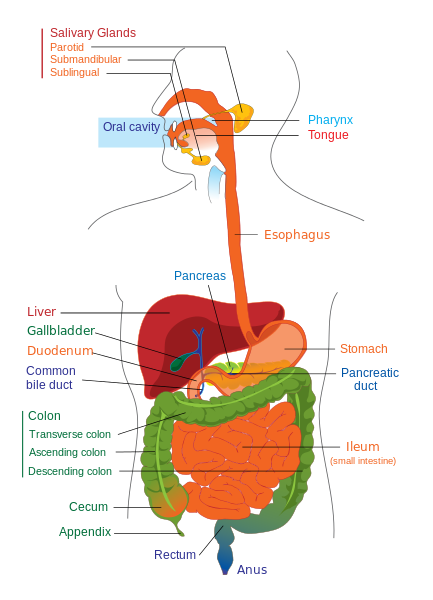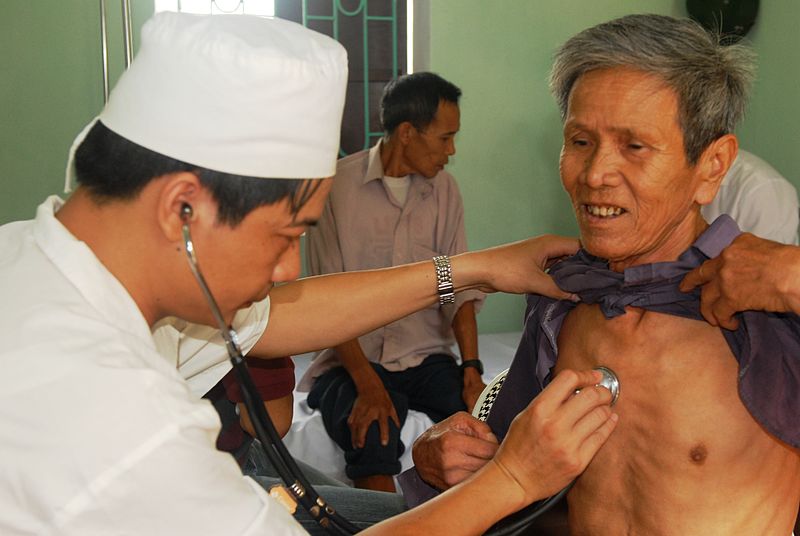Increased frequency and water content of stools than is normal for the individual.
Usually: > 3 stools per day
•Descriptive
Watery, mucoid, dysenteric
•Pathogenetic:
Infective, non-infective
Diarrhoea can be categorized as:
•Acute: less than 7 – 10 days
•Persistent: More than 7 – 10 days
•Chronic: More than 14 – 21 days
(Persistent diarrhoea often a prolonged course of acute insult – different management)
Acute Infective Diarrhoea
•Aetiology
Virus (commonest: Rotavirus)
Bacteria – Invasive
Enterotoxigenic
Parasites
Fungi
Mechanisms of acute diarrhoea
•Osmotic
eg Lactose intolerance
•Secretory
eg Cholera
•Mixed secretory-osmotic
eg Rotavirus
•Mucosal inflammation
eg Invasive bacteria
•Motility disturbance
Pathogenesis of Diarrhoea
Depends on pathogen
•VIRUS DIARRHOEA (e.g. Rotavirus)
- Effect on villus structure and function
- Enzyme damage
- Significant effect on digestion and absorption
- Secretion-absorption imbalance
Bacterial Diarrhoea
•without mucosal injury
mediated by:
- Enterotoxins
- Adhesins
•with mucosal injury
mediated by:
- Adhesins
- Invasins
- Cytotoxins
Effects of Diarrhoea
•Dehydration
•Biochemical disturbances:
- Sodium, Potassium
- Metabolic acidosis
- Blood glucose
- Uraemia
•Convulsions
•Severe gut damage : ileus, NEC, PLE
Clinical patterns
•Some associated features depend on pathogen:
- Rotavirus
- Invasive bacteria
- Toxigenic bacteria
•Fever, abdominal pain, early or late vomiting, other symptoms
•Frequency of bacterial or protozoal pathogens — In a review of more than 30,000 stool cultures performed at 10 hospitals in the United States from 1990 to 1992, a bacterial pathogen was identified in 5.6 percent . The frequency of the most common bacterial pathogens were:
•Campylobacter — 2.3 percent (42 percent of isolates)
•Salmonella — 1.8 percent (32 percent of isolates)
•Shigella — 1.1 percent (19 percent of isolates)
•E. coli O157:H7, the major enterohemorrhagic strain — 0.4 percent overall (7 percent of isolates) but much more common in visibly bloody isolates (7.8 versus 0.1 percent in specimens without visible blood).
VIRAL CAUSES
•Norovirus — Over one-third of outbreaks of nonbacterial gastroenteritis in the United States have been associated with noroviruses
•Rotavirus
•Adenovirus
• Astrovirus
PARISITIC CAUSES
•Cryptosporidium — Cryptosporidium is the most common parasitic cause of acute foodborne diarrhea in the United States, accounting for 8 percent of cases
•Giardia
•Cyclospora
• Entamoeba histolytica
Management of diarrhoea
•Replace the fluids and electrolytes which are lost
•Drug therapy has very little place
- Antibiotic
- Antisecretory
- Antimotility
•Nutritional management
•Follow-up to ensure recovery
Indications for diagnostic evaluation
•Profuse watery diarrhea with signs of hypovolemia
•Passage of many small volume stools containing blood and mucus
•Bloody diarrhea
•Temperature ≥38.5ºC (101.3ºF)
•Passage of ≥6 unformed stools per 24 hours or a duration of illness >48 hours
•Severe abdominal pain
•Recent use of antibiotics or hospitalized patients
•Diarrhea in the elderly (≥70 years of age) or the immunocompromised
 howMed Know Yourself
howMed Know Yourself
